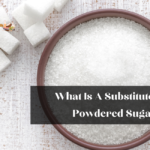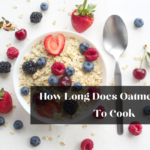Coffee appliances are integral to the daily lives of millions of people. Every day, millions of Americans consume coffee. If you have never used a coffee machine before, the manufacturing process may not be intuitive. This article, will explain how to brew coffee in a coffee maker. Follow these straightforward methods to prepare a satisfying coffee blend cup.
Ingredients And Materials
- Coffee beans or ground coffee (approximately 1 to 2 teaspoons of coffee per 6 fluid ounces of water).
- Pure, icy water
- Coffee machine
- If your coffee appliance requires it, a coffee filter.
- A coffee cup
How To Brew Coffee In A Coffee Maker
Brewing coffee in a coffee maker is simple, and most drip-style coffee makers function similarly. Here is a detailed guide to brewing a delectable cup of coffee:
Basic Coffee-Making
Add A Coffee Filter In The Filter Basket
- Natural or disinfected filters may be used, but it is not advised to use generic filters. Standard, low-cost filters produce less consistent results.
- Numerous coffee makers include a mesh filter. If available, it is typically the most convenient and environmentally favorable option.
- Use the specialized filter of the coffee maker rather than a paper filter.
Measure Out The Coffee
- The more coffee you want to make, the more coffee you need to place in the filter. The ratio of coffee to water may vary depending on your coffee machine and the variety of coffee you are preparing.
- The standard ratio for brewing coffee is two tablespoons for every six ounces of water (or one full coffee grinder lid, no more). When determining the coffee-to-water ratio, it is advisable to consult the coffee maker’s instruction manual.
- Special coffee blends may have specific coffee-to-water ratios; the instructions for most coffee blends are printed on the packaging.
- Ensure you are employing a tablespoon. The majority of coffee makers include a teaspoon. Read the instructions to see how many teaspoons you need.
Measure Out Enough Water To Brew Your Coffee
- Use the measuring lines on the coffee container or the side of the coffee maker to measure. Pour water from the coffee kettle into the coffee maker’s tank, typically behind or above the filter.
- The natural tendency for first-time coffee maker consumers is to pour water directly into the filter basket. Avoid doing this. Before brewing, pour the water into the compartment designed to contain the water. Place the coffee pot back on the warming plate after dispensing.
Plug In The Coffee Maker And Turn It On
Some coffee makers percolate coffee automatically, whereas others require a manual time setting.
Wait Until The Coffee Is Completely Brewed Before Pouring
Various coffee makers have a “pause” button that lets you fill a cup before the coffee is done making.
If You Used A Paper Filter, Throw It Away After Brewing
- If you eliminate the coffee grounds later in the brewing process, the resulting brew will be bitter due to the subsequent release of flavors.
- If you used a mesh filter, merely dispose of (or recycle) the coffee grounds and wash the filter.
2. Getting The Most From Your Coffee
Clean Your Coffee Machine
- Coffee machines can accumulate mineral deposits over time as with any apparatus that uses substantial amounts of heated water.
- These sediments can impart a foul, rancid flavor to the coffee. Clean your coffee maker regularly for the finest tasting coffee. Refer to our guide on Cleaning a Coffee Maker.
- If your coffee machine emits an odor or has visible sediment when it is not in use, or if you cannot recall the last time you cleansed it, it is likely time to clean it.
Utilize Freshly Ground, Correctly Preserved Beans
Rather than purchasing pre-ground coffee, you should purchase fresh coffee beans and mill them yourself for a fresher and more flavorful coffee. The flavor of coffee is derived from delicate flavor compounds within the coffee bean’s cells. Grounding exposes the interior of the coffee bean to the air, which, over time, causes the coffee to lose some of its properties.
- Ensure that your coffee beans are stored in an airtight container.[5] Because coffee has odor-absorbing properties, coffee grounds can be substituted for baking soda in the refrigerator.
- Unfortunately, this also means that if your coffee is not stored in an airtight container, it may absorb flavors from other substances.
- Coffee enthusiasts disagree on whether coffee grounds should be stored at low temperatures. Some suggest storing coffee beans in the refrigerator if they will be consumed within a week, and in the freezer if they will not be consumed within a few weeks. Others merely store them in a cool, dark location.
Use The Appropriate Particle Size For Your Fermentation Method
Depending on how the coffee is made, the best taste may come from coarser or denser grounds. Since the flavor compounds in ground beans dissolve in water, changing how coarse the grounds are (and, by extension, how much of their surface area is in contact with water) can change the final taste. Most of the time, the longer the coffee and water have to be in touch, the coarser the grind.
Most normal “drip” coffee makers, like the ones we talked about in Part 1, can use a medium grind, which is what most pre-ground coffee has. If you use a strange way to prepare, like a French press or an Aeropress.
Utilize The Proper Temperatures For Each Ingredient
- For fermentation, water should be between 195 and 205 °F (91 and 96° C), or just below the point where it starts to boil.
- Colder water won’t get enough flavor out of the coffee beans, while hotter water can boil the beans and change their taste.
- Bring the water for your coffee to a boil, then take it off the heat and let it sit for about a minute before pouring it over the coffee grounds.
If you store your coffee grounds in the refrigerator, most brewing methods will not be affected negatively. However, coffee beans should be allowed to attain room temperature before brewing espresso. Because espresso brewing uses a relatively small quantity of water in contact with the coffee for a relatively short period, cold beans can affect the extraction process.
Thanks for reading.










